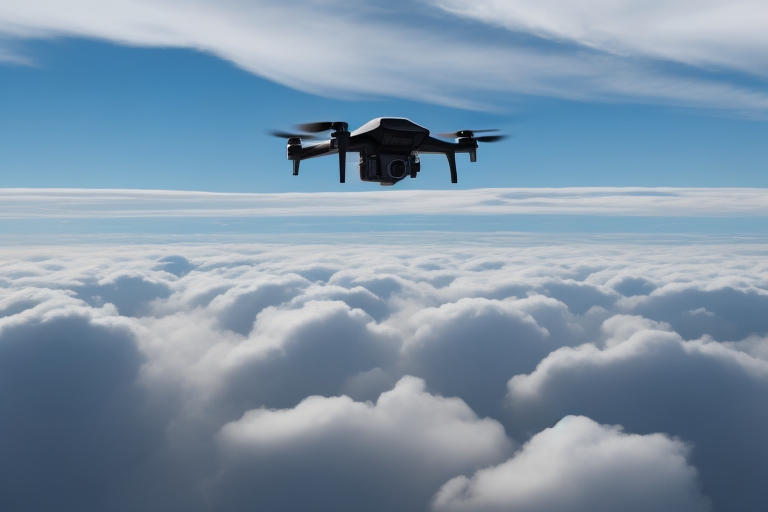Drone 2.0 Strategy: Creating a Large-Scale European Drone Market

- November 29, 2022
- allix
- AI Projects
The Commission today adopted its European Drone 2.0 strategy which presents a vision for continuing the development of the European drone market. The strategy builds on the EU framework for the safe operation of drones and the definition of associated technical requirements, which is the most advanced in the world. The new strategy sets out how Europe can develop commercial exploitation of drones on a large scale while offering new possibilities in this sector.
From job creation to new mobility solutions
Thanks to the comprehensive regulatory framework of the EU, drones have flown hundreds of thousands of hours safely over European skies in order, for example, to map infrastructure, monitor oil spills, or sample soil. Projects relating to the use of drones for medical deliveries by air, and in particular the transport of medical samples between health care services, are also progressing well. The implementation, in January 2023, of a “U-space”, a unique European system in the world to manage drone traffic in complete safety, will lay the foundations for increased use.
Before advancing these innovative technologies, the Commission wishes to ensure drones get social support. To address noise, security, and privacy concerns, the strategy, therefore, calls on local, regional, and national authorities to ensure that drone services meet the needs of citizens.
The strategy foresees that the following drone services will be part of Europeans’ lives by 2030:
- Emergency services, mapping, imaging, inspection, and surveillance, in compliance with the applicable legal framework, using civilian drones as well as urgent delivery of small consignments such as biological samples or drugs.
- In the field of innovative air mobility, such as air taxis scheduled passenger services will begin to be offered, initially with a pilot on board, with the ultimate goal being full automation of operations.
To unlock the market potential for drones and drone-related services in the EU, it is necessary to identify technological modules such as artificial intelligence, robotics, semiconductors, EU space services, and mobile telecommunications. This will enable the EU to build an innovative and competitive drone industry, thereby reducing strategic dependencies.
The strategy also identifies areas for synergies between civilian and defense drones, as well as for strengthening anti-drone capabilities and system resilience.
19 actions for the drone market of tomorrow
The Commission will now start work on the strategy’s 19 flagship actions at operational, technical, and financial levels to create the right regulatory and commercial environment for tomorrow’s airspace and drone market:
- The adoption of common airworthiness rules and new training requirements for pilots of remotely piloted and eVTOL (crewed, electric, vertical take-off and landing) aircraft.
- Funding for the creation of an online platform to help local actors and industry to implement innovative and sustainable air mobility.
- The development of a strategic drone technology roadmap to identify priority areas for research and innovation, reduce existing strategic dependencies, and avoid the emergence of new dependencies.
- The definition of criteria for a voluntary label indicates that a drone is cybersecurity approved.
This work will pave the way for large-scale commercial exploitation and ensure that Europe benefits from synergies between civil, security, and military uses of drones and associated technologies, including anti-drone solutions.
Context
The Commission’s sustainable and smart mobility strategy provided for the development of an updated European Drone strategy before the end of 2022. The communication is accompanied by a Commission staff working document that assesses the challenges facing the drone industry, as well as the analysis and data that underpins the new European Drone 2.0 strategy.
Since 2014, the Commission has been laying the foundations for a comprehensive EU drone policy. the Commission Implementing Regulation (EU) 2019/947 and the Commission Delegated Regulation (EU) 2019/945 contain detailed rules and procedures for the operation of unmanned aircraft, and they set out requirements for the design and manufacture of unmanned aircraft systems. Since 2003, the EU has invested nearly €980 million in the development or use of drones for innovative applications. It has funded 320 drone-related projects under its research and innovation programs.
Statements by members of the College
With the arrival of a new generation of electrically powered aircraft capable of operating in an urban and regional environment, we must ensure that, in addition to maintaining the safety of operations in our airspace, the conditions meet both the business needs of operators and the expectations of citizens for privacy and security. The strategy presented today not only improves Europe’s ability to develop commercial drone operations on a large scale but also opens up new possibilities, in particular for small and medium-sized enterprises. If an adequate regulatory framework were put in place, the market for drone services in Europe could reach, by 2030, a value of 14.5 billion euros and create 145,000 jobs.
Categories
- AI Education (33)
- AI in Business (58)
- AI Projects (80)
- Research (53)
Other posts
- Meta Introduced Llama 3 LLM
- Caffe – A Deep Learning Powerhouse
- The Study Reveals The Potential Of Artificial Intelligence To Take Over Key Management Functions In Scientific Research
- eBay Introduces New AI-Driven ‘Shop the Look’ Functionality to Its iOS Application
- Brave Releases Ai Assistant for iPhone and iPad Users
- Introduction to MXNet
- The Quiet-STAR Algorithm, Which Allows Chatbots To Think About Answers Before Responding
- Orchard’s Vision System Transforms Agricultural Machinery Into Ai-Powered Data Collection Tools
- Deepmind Introduces Genie – An Artificial Intelligence That Creates 2d Game Environments From A Single Image
- Microsoft Cognitive Toolkit (CNTK)
Newsletter
Get regular updates on data science, artificial intelligence, machine



